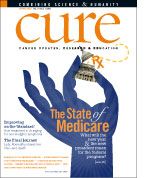Publication
Article
CURE
U.S. Surgeon General's Office Releases Updated Family Health History Program
Author(s):
Updating your family health history--U.S. Surgeon General's office updates family health history program, "My Family Health Portrait"
Following the fifth annual National Family History Day, the U.S. Department of Health and Human Services released an updated and improved version of the Surgeon General’s “My Family Health Portrait,” a web-based family health history tool.
The My Family Health Portrait tool, available for free at https://familyhistory.hhs.gov makes it easier for patients to compile and share individual and family medical history with physicians and family members. Filling out a basic family health history should only take 15 to 20 minutes, according to the site, and the only requirement is that users have an up-to-date version of their web browser software, such as Internet Explorer or Firefox. Personal information entered into the tool is downloaded and saved only to the user’s computer, and is not kept by any government or other institution.
“Family history has always been an important part of good health care, but it has been underused,” says Acting Surgeon General Steven Galson, MD, adding that the new tool will serve as a platform for developing new risk assessment software that will help in screening and prevention of cancer, heart disease, diabetes, and other conditions.
The tool guides users through a series of steps that compiles health information about each family member. About 15 common diseases are included with an option to add additional conditions not listed.
From that information the tool assembles a “family tree” diagram that can be downloaded and printed to be shared. If a person chooses to share their health portrait with their family, the tool can “re-index” the information for each member included in the tree. Individual family members can create their own family health history with themselves as the center, allowing the new user to build upon information already provided.
Health care professionals can use the information from the family health history to better individualize diagnosis, treatment, and prevention plans. Users can go back and add new information at any time; and because the information is saved directly to the user’s computer, it is easily accessible.
The tool was originally launched in November 2004, just a few months after the 2004 HealthStyles Survey, conducted by the U.S. Centers for Disease Control and Prevention (CDC), which showed that 96.3 percent of 4,345 respondents considered knowledge of family history either very important (72.5 percent) or somewhat important (23.8 percent) to their personal health. However, only 29.8 percent reported actively collecting information to develop a family health history.
Past Surgeon General Richard H. Carmona, MD, released the first version of the tool as part of the Surgeon General’s Family History Initiative to help focus attention on the importance of family history and encourage people to learn about their families’ health histories as a way of promoting personal health and preventing disease.
The new tool is also freely available for other organizations to adopt and customize to their needs. The National Institute of Genomic Medicine of Mexico (INMEGEN), the first to adopt the tool, released a Mexican Spanish-language version that is available at www.inmegen.gob.mx/retratodesalud/index.html. Printable PDF versions of the tool are available in French, Polish, Chinese, and Portuguese at www.hhs.gov/familyhistory/order.html.
To learn more about My Family Health Portrait, visit www.hhs.gov/familyhistory/ or https://familyhistory.hhs.gov.






